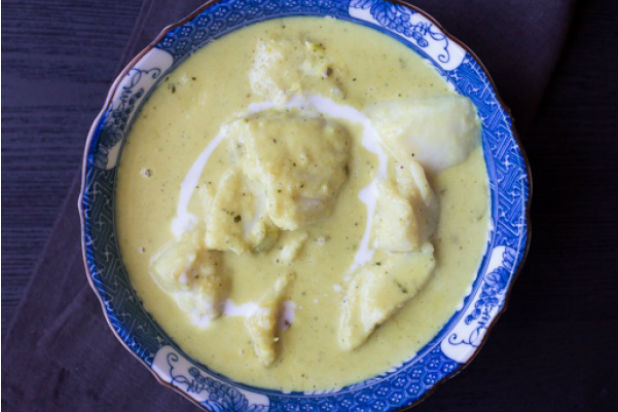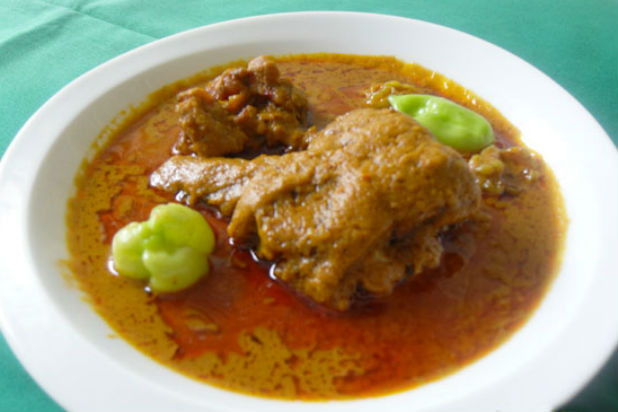10 Moutherwatering Curries Around The World You Can't Miss (Slideshow)
Mas Riha can be eaten any time of day, but when it's eaten for breakfast, locals serve it with a slice of roshi (or flatbread instead of rice). The most important part of mas riha is the fresh tuna cooked over a low fire with fried onions and spices. Water gets added after the tuna is cooked, and the coconut milk isn't added until the curry is almost done.
Sukhi Bhaji, Gujarat, India
This dry potato dish is not usually what Westerners think when they hear "curry", but curry leaves, green chilies, and cilantro leaves give the potatoes a distinctive curry flavor. The curried potatoes are traditionally served with poori, an unleavened fry bread.
Kaeng Som, Thailand
Thailand's sour and spicy fish dish is usually prepared with cauliflower, daikon, asparagus, and even bits of cha om (an aromatic herb) omelets. Some might contain pineapple for an element of sweetness, but never coconut milk, which is taboo in a traditional kaeng som.
Doro Wat, Ethiopia
Arguably the most popular dish in Ethiopia, Doro Wat is a stew made from chicken and hard-boiled eggs. Unlike many curries, the preparation of wat involves cooking onions and aromatics first, without any oil or fat, until their moisture has slowly cooked away. Fat is added later, which causes the onions to break down and thicken the stew.
Peshawari Karahi, Pakistan
Dried fenugreek and lamb are essential components to this traditional tomato-based curry. Green chilis add heat and yogurt both thickens the stew and helps to break down and tenderize the meat.
Curry Fish Balls, Hong Kong
These deep fried snacks are not the first thing that comes to mind when thinking about curry. Yet Hong Kong's curry fish balls remain one of the most popular street vendor snacks around. Government regulations mandate the "fish balls" contain 20% fish. What's the rest? It's a mystery. But the balls are boiled in curry spicy curry sauce and then deep-fried. They're served in quantities of 5-7 on a bamboo skewer.
Kare, Japan
Curry is considered a Western dish in Japan because it was introduced in the late 19th century by the British. Curry sauce is a roux made of curry powder, flour, and oil and served over meat, vegetables, or plain rice to make a kare, or curry.
Curry Agouti, Trinidad
In the 19th century, Indians in Trinidad didn't have the spices to recreate traditional styles of curry, so they mostly relied on turmeric combined with local proteins, such as the agouti, a small animal similar to a groundhog, to make curries. This wet curry also uses papaya and coconut milk.
Curry House Style, England
Curry houses have been a British staple since 1810, and harken back to the bad old days of Imperialism. However, curry remains one of Britain's favorite dishes. A curry house sauce usually involves onion, garlic, and fresh ginger. Ground coriander is the most common thickening agent and turmeric is used for color. They contain a wide variety of proteins, most commonly meatballs, chicken, and lamb.
Opor Ayam, Indonesia
The base of this sweet, mild curry is a chicken cooked in coconut milk. The stew also sometimes contains lemongrass and cinnamon, and is often served with kupat, a dumpling made from rice stuffed into a palm leaf.









